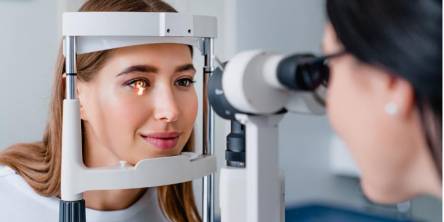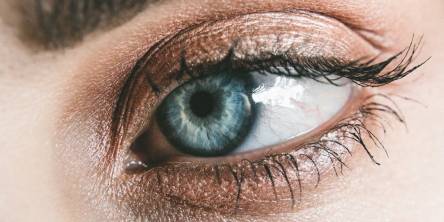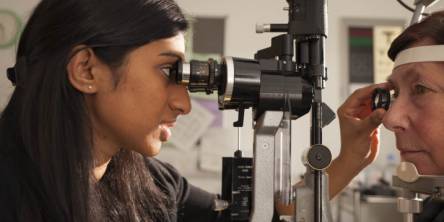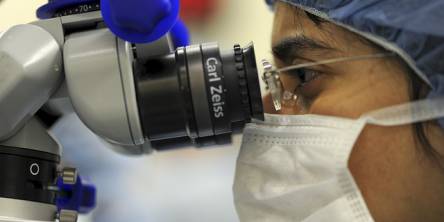Top 4 Eye Tests and Exams for Older People
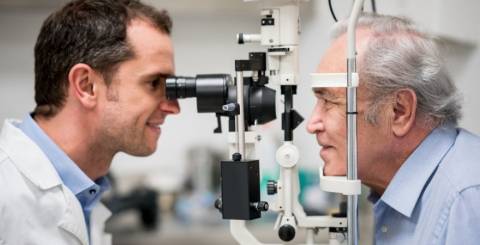
You should start visiting an ophthalmologist or eye expert once you become 40 years old and then every year going forward. This is a crucial thing to do since their testing procedures enable them to find significant vision problems early on.
Many major eye problems, such as diabetic eye disease, glaucoma, or macular degeneration, go undetected until they have progressed to a severe degree. Regular eye exams should be included in a person's health assessment to avoid such consequences.
Here are some medical imaging methods and general checks your ophthalmologist should utilize and perform during your visit:
1. Visual acuity test
The visual acuity test, which is used to evaluate how sharp your vision is, is one of the most basic of all. To put it another way, the visual acuity test helps determine the distance at which you can sustain good eyesight. A visual acuity test should be conducted if you've recently become concerned about some sort of vision problem.
It is crucial to do a visual acuity check since it should be a priority to identify vision disorders early on. This eye exam is also risk-free for kids.
This exam requires you to look at a table of letters or symbols from various ranges. As a result, the analysis would aid in determining how good your eyesight is and how far you can see.
2. Corneal topography
A non-invasive medical imaging technique called corneal topography renders your cornea's profile in three dimensions. This gives the doctor the opportunity to examine your eye's whole front surface and look for any abnormalities or flaws that could be present. This technique is crucial when placing a contact lens on the pupil to ensure that it fits properly and that it is not causing any kind of harm to the cornea.
The topography is also used when evaluating a patient for refractive surgical procedures like LASIK or for postoperative procedure evaluation. It is also essential when working with people who have undergone corneal grafts or transplants, as well as people who have corneal diseases like Keratoconus. Some specialists frequently do topography as part of a thorough eye examination and perform a far more thorough version on everyone who is possibly a contact lens wearer or is interested in getting fitted with contact lenses.
3. Macular degeneration
People with macular degeneration typically report blurriness in the center of their eyesight rather than towards the corners or in general. This distinguishes it from other prevalent forms of vision loss. Objects in the primary field may be blurred, unusually intense, or dark, appear oddly shaped, or be lost in an empty space while edges continue to be in focus. Thai typically occurs due to deteriorated capillaries at the rear of the eye leak fluid that distorts vision. Leakage gradually causes damage to the retina's sensitive photoreceptors.
If you have dry macular degeneration, any changes in your vision should be immediately reported to your ophthalmologist. The best eye doctors for macular degeneration recommend getting regular checkups and practicing self-monitoring using the Amsler Grid or other tools to preserve your eyesight. Patients who already have dry macular degeneration are susceptible to wet macular degeneration, which can be effectively treated if it is caught early enough.
4. Refractive error
Refractive error, a common eye problem, is the most prevalent culprit behind preventable blindness worldwide. It is a problem with the eye's ability to focus, and in many situations, it may be swiftly fixed with a pair of glasses. Myopia (short-sightedness), Hyperopia (lengthy-sightedness), astigmatism, and presbyopia are all examples of refractive errors that can affect people of all ages. For additional information on these issues, consult an experienced ophthalmologist.
Similar Articles
It is critical to ensure your child's overall health and vision. It is critical to schedule eye examinations for babies and young children throughout their early development. This is because early-onset eye problems can have a long-term influence on their eyesight
Maintaining eye health becomes increasingly important as people age. This is especially true for seniors, who are more susceptible to vision problems and eye conditions. Regular eye exams benefit older adults by helping protect healthy vision and prevent severe eye diseases.
Maintaining good eye health is crucial for overall well-being, yet many people overlook the importance of regular eye exams. Whether you’re searching for a “walk in eye exam near me” or scheduling an appointment with your regular optometrist, understanding the benefits of these exams can help you prioritize your eye health
People with diabetes who take Ozempic are at risk of developing not only diabetic retinopathy but also cataracts, glaucoma, and dry eye. Some eye symptoms, such as dry eyes, might be caused by both an underlying health issue and a pharmacological side effect, such as semaglutide-induced dehydration.
In today's digital age, we are constantly exposed to screens of various devices such as smartphones, laptops, and tablets. While these technological advancements have greatly improved our lives, they also come with a downside - digital eye strain.
You don't have to wait until you have visual problems to consult with an ophthalmologist. Regular examinations are recommended to detect the earliest signs of eye disease. You don't want to risk losing your vision in any way. This is why it's important to understand when you should see an eye doctor.
Taking care of your vision and overall eye health is essential for maintaining a good quality of life as you age. Hence, it’s not a good idea to overlook those regular eye exams as they are a crucial aspect of eye care. Read on to explore the most significant reasons for scheduling an appointment with an ophthalmologist, as well as the importance of professional eye care and early detection of potential problems with your vision.
Chandraprabha vati is a standardized herbal formulation mentioned in our ancient texts. This medicine is a mix of various ingredients in a tablet (Vati) form. Chandraprabha vati is a Rasayan (Rejuvenator) and Balaya (Strengthening). It is an analgesic, antispasmodic, anti-hyperglycemic, and a good blood purifier. It is indicated in a number of disorders.
There are millions of patients who every year correct LASIK by losing vision for myopia, farsightedness or astigmatism. LASIK refractive surgery is a cutting-edge technique that uses the excimer laser to correct many of the most common vision defects.



